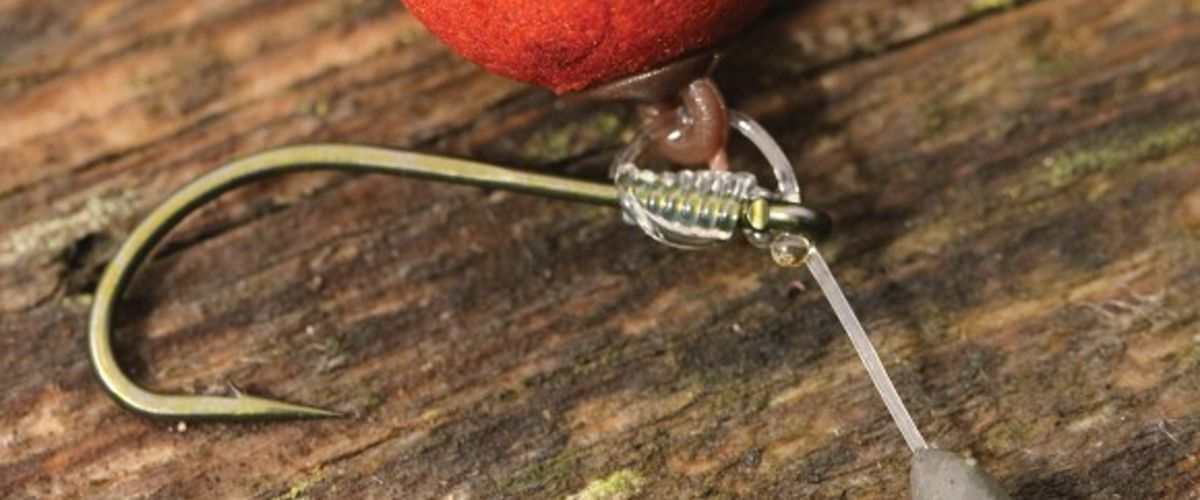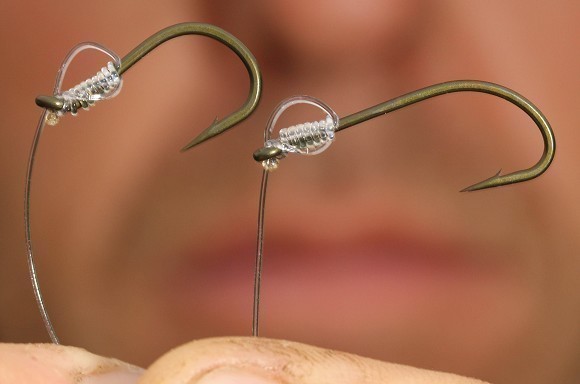
Why you should try longshank hooks
Nigel Williams reveals how, contrary to popular belief, longshank hooks can be absolutely devastating when fished D-rig style for Chods and Hinge Stiff Rigs
When people see me using longshank hooks for my Chod Rigs and Hinged Stiff Rigs, they look at me like I’m a little bit strange. I can totally understand this though, because in most magazines these days, nearly all big fish anglers are encouraging anglers to use a hook pattern that boasts an out-turned eye. Although I totally understand the concept and where they are coming from, I’ve found that my trusty old longshank hooks have a lot more applications than most anglers give them credit for.
Now, I’ve never been one of those anglers who thinks up weird and wonderful presentations just to be different or more ‘carpy’ than the next bloke, but I can honestly say that I think longshank hooks are one of the most effective hook patterns out there for Chod Rigs and Hinged Stiff Rigs.
One of main reasons anglers use a hook with an out-turned eye for rigs with a stiff section is because they don’t want to reduce the gape of the hook. I totally get this and couldn’t agree with the idea more, so I’d never use a swept-shank hook or conventional wide gape hook with a Chod because the combination with the stiff material would most certainly reduce the gape and hinder the rig’s hooking capabilities. That said though, due to the length of the shank on the long shank, you can get away with using a super stiff material without reducing the gape of the hook. In fact, as far as I’m concerned, a longshank hook fished on a Chod Rig actually creates a much larger gape and one that I’m certain will hook more carp.
For me, the main advantage of using a longshank hook on a Chod Rig or Hinge Stiff Rig is the fact that it allows you to create a presentation similar to the old bent hook rig. As lots of you will probably remember, the bent hook rig was an extremely effective presentation for large carp, but it did cause a little bit of controversy when it came to hooking smaller fish. For that reason alone, lots of venues banned the rig and anglers simply don’t get the chance to use this devastating presentation anymore. Fortunately though, when using longshank hooks like I’ve described, anglers can now create a rig that boasts all the great attributes of the old bent hook rig, but the presentation is extremely safe and isn’t going to pose any danger to the fish.
As well as this, I’ve found that the hook holds are much better with longshank rigs than conventional wide-gape style hooks with an out-turned eye. When a fish picks up the hookbait, I’ve found the hook travels much further into the carp’s mouth, therefore the hook holds are absolutely spot-on. I’ve lost count of the amount of anglers that have told me how they regularly lose fish on Chods and I’m certain this can sometimes because the rig doesn’t travel far enough into the carp’s mouth to obtain a good hook hold. Have you ever experienced a hook pull when using a Chod seconds after lifting into the fish? This is a common occurrence for most anglers and I’m convinced a longshank hook could eliminate this completely.
As well as aiding hook holds, I’m certain that the nature of the hook means that it spins quicker when a carp picks it up. If you look at the shape of the rig tied with a longshank compared to a conventional hook, you can see that it sits at a slightly more prone angle, which I’m certain will aid the spin factor. I’ve watched how the rig performs in the margins and the smallest bit of movement under the water causes the hook to turn extremely quickly. Perfect!
Recently, I’ve seen lots of anglers using much larger D’s on their Chods and also creating anti-eject presentations using hook beads and hook swivels. Although I’m not too sure that these presentations necessarily catch more fish, I’m certain they dramatically improve hook holds and result in less lost fish. Try it some time!
I’ve tried a variety of different pattern longshank hooks over the years but nowadays I’m completely sold on the Avid Carp Reaction Range LSK hooks. Although it doesn’t really matter when using Chod Rigs, I absolutely love the fact that they boast a green, non-glare coloration that makes them much more unobtrusive on the bottom. As well as this, I simply cannot fault how sharp and strong they are. I’ve always been a fan of sharpening hooks for many years but, if I’m honest, I’m happy to use these ones straight out of the packet; they’re that good!
Using longshank hooks may not be everybody’s cup of tea and I totally understand that. If you’re experiencing hook pulls or dodgy hook holds with standard hooks, give a longshank a try. On venues that are getting hammered on Chods and the carp are starting to approach them with more caution, I genuinely believe longshanks could catch you more carp.
NIGEL WILLIAMS






